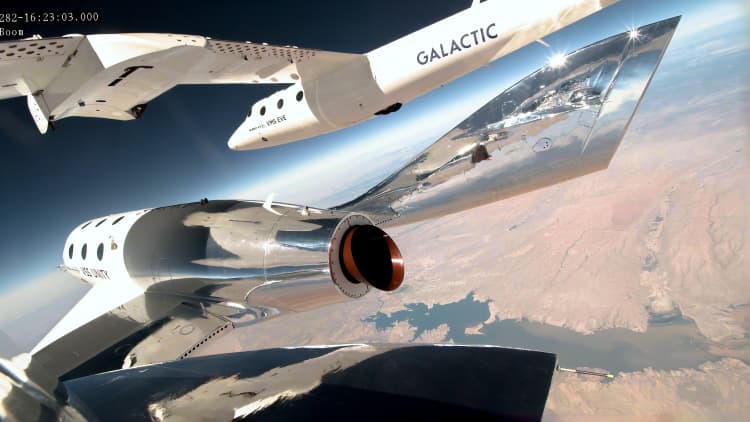
Space tourism company Virgin Galactic, founded by Sir Richard Branson in 2004, completed its long-awaited first commercial spaceflight, called Galactic 01, on Thursday.
Taking off from Spaceport America in New Mexico, the company's spacecraft was flown by a pair of pilots and carried four passengers: a Virgin Galactic trainer, to oversee the mission from inside the cabin, and its first trio of paying customers. The three paying passengers are members of the Italian Air Force. The flight also carried 13 research payloads onboard.
Virgin Galactic's start to commercial service comes after years of delays and setbacks. The company previously said if Galactic 01 was a success, it would plan to fly its second mission as soon as August and then aim to begin flying its spacecraft, VSS Unity, once a month.
Virgin Galactic stock fell 10% Thursday after the successful flight.
Sign up here to receive weekly editions of CNBC's Investing in Space newsletter.
The company continues to raise capital to fund development of its coming Delta class of spacecraft, aiming to build a fleet of vehicles that can each fly at least once a week.
Virgin Galactic has a backlog of about 800 passengers. Many of those tickets were sold at prices between $200,000 and $250,000 over a decade ago, but the company reopened ticket sales two years ago, with pricing beginning at $450,000 per seat.



